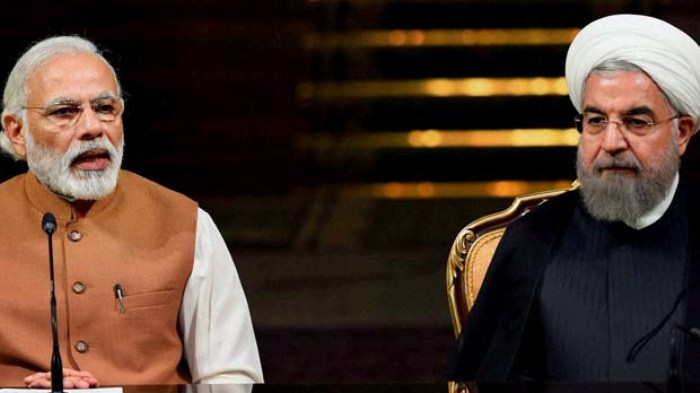East Remains Iran’s Friend

The change in Iran’s foreign policy in the Rouhani administration is usually recognized by the agreement which was reached over Iran’s nuclear crisis with western countries. But since Rouhani’s coming to power, particularly in the months following the JCPOA, Iran’s relations with eastern states have also significantly been developed. The recent visit made by the South Korean President, after visits by the Presidents of China and Vietnam, and also the Indian Prime Minister’s visit to Iran are the most important signs of developments in Iran-East relations; this development could be called the second phase of Iran’s look towards the East.
Although the view of the East has always been important in Iran’s foreign policy, but this view as an approach was first proposed in the Ahmadinejad administration. During this period, China, India, Japan and South Korea became Iran’s most important trade partners. But sanctions complicated the relations and created deadlocks and tarnished the public opinion of Iranians. But today, in the post-JCPOA atmosphere, a new phase of Iran’s look towards the East has begun. What are the most important characteristics of the second phase?
1- Change of US’ role
During the last decade, relations between Iran and important Asian countries were trilateral and the US, as the third party, has had significant role in its form. Therefore, the first and most important factor which differentiates the past and present view towards the East is the change in the US role. During Ahmadinejad’s administration, although the common interests of Iran and these countries were growing, the US limited these interactions by imposing unilateral and multilateral sanctions. South Korea and Japan immediately limited their relations within the framework of the US sanction agenda. India gradually adjusted itself with these sanctions and China attempted to maintain the lowest level of interaction with Iran and use it as leverage in its strategic bargaining with the US.
But in the post-JCPOA era, the US has not shown any sensitivity with regard to Iran’s interactions with key Asian countries, thus, the most important obstacle in this path has been removed. Despite this change, the existing unclear future of Iran-US relations still impacts the relations between Iran and these countries. Whether Iran and the US move towards détente in the future or towards more tension will have totally different impacts on Iran-East relations.
2- Change in oil’s role
The second factor which changes Iran’s view of the East is the change in the role of energy, especially oil. Contrary to Ahmadinejad’s administration, during recent months, the oil market has deeply changed and its price has been greatly reduced. Therefore, oil is not as significant as it was in the relations between Iran and eastern countries. Thus, both parties attempt to define other issues as key areas of cooperation. Transformation of the megaprojects of silk-road economic beltway into the most important area of Iran-China cooperation, the issue of investment in the most important area of cooperation between Iran and South Korea, and probably the development of the port of Chabahar into the most important area of cooperation between Iran and India could be considered as symbols of multilayer cooperation of both parties.
3- New competitors
During the sanctions era, Asians and particularly China did not have any competitor in Iran’s market. But in the post-JCPOA period, the Asian countries themselves have become competitors and European countries, especially France and Italy, attempt to revive their situation in Iran’s market. The high level of technology of Europeans and their better understanding of Iran and the positive view of Iran’s private sector with regard to European companies have made them serious rivals for Asian countries.
4- Change in Iran’s approach
During the sanctions era, Iran cooperated with Asia under special international conditions but now Iran attempts to develop its relations with these countries with a new approach. Although there is no difference of opinion between Iran’s elites regarding the significance of expansion of relations with these countries, Iran’s senior economic officials have, repeatedly, stated that they do not intend for Iran to become the market for industrial products of other countries and they prefer the production of joint economic products. With this change in approach, Iran intends to change the interactions with key Asian states from the simple pattern of oil in exchange for goods into more complicated patterns of economic cooperation. On one hand, this change may complicate the implementation of these agreements and, on the other, might push both parties towards inter-dependence; which might make both parties sensitive and vulnerable with regard to cutting off economic exchanges.
The second phase of the view towards the East is rapidly expanding, although it is not discussed in the media. Certain elements including common economic interests between these countries and Iran, absence of political obstacles and the growing status of the key Asian countries in the world economy give important opportunities to the powers of this region to maintain their position as Iran’s key partners in trade and investment in the post-JCPOA era. It is possible that many achievements of the JCPOA could be reached with its interaction with Asia and not the West, but more importantly the Asian countries might be the real winners of the pre-JCPOA and post-JCPOA eras.

